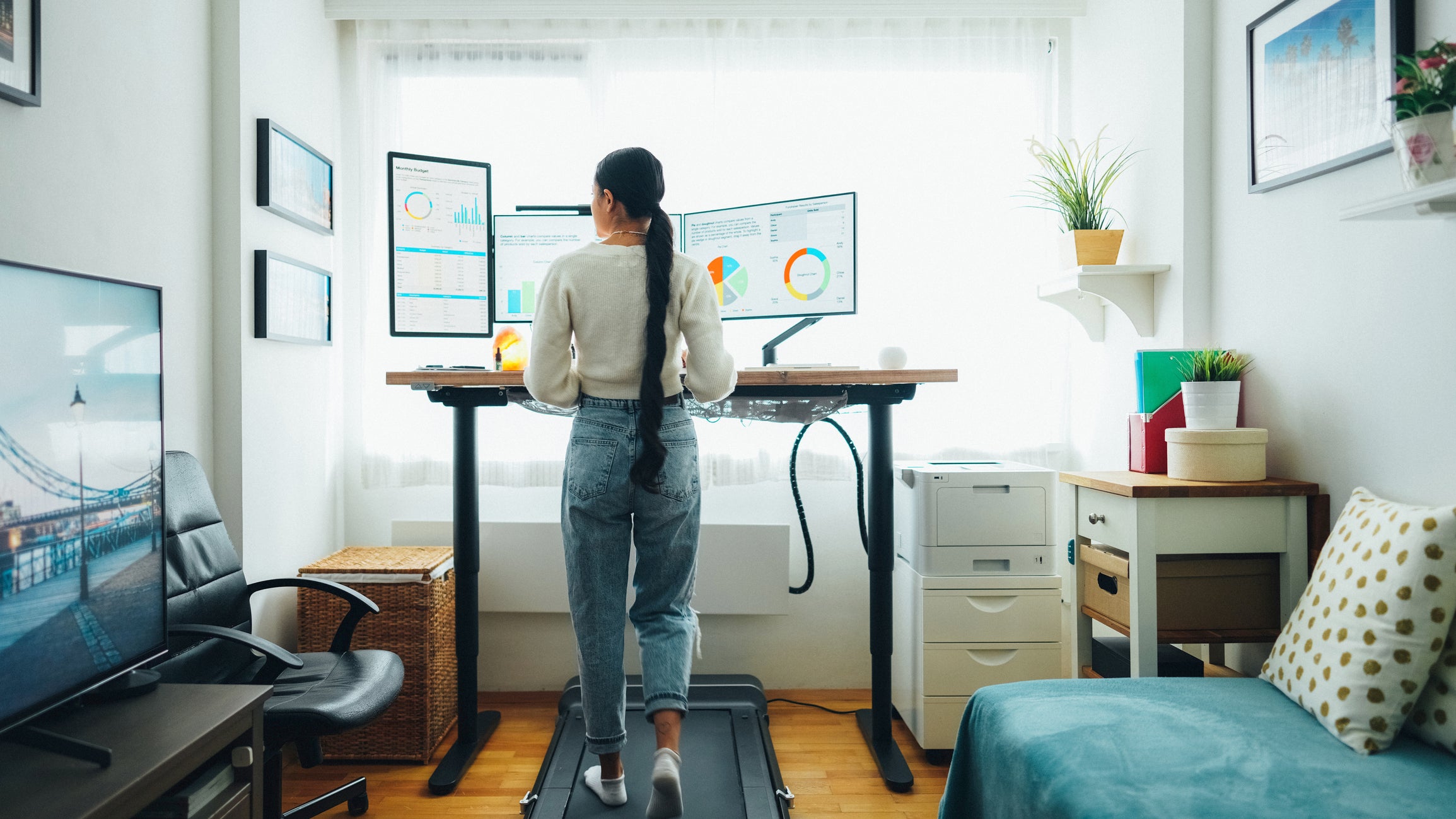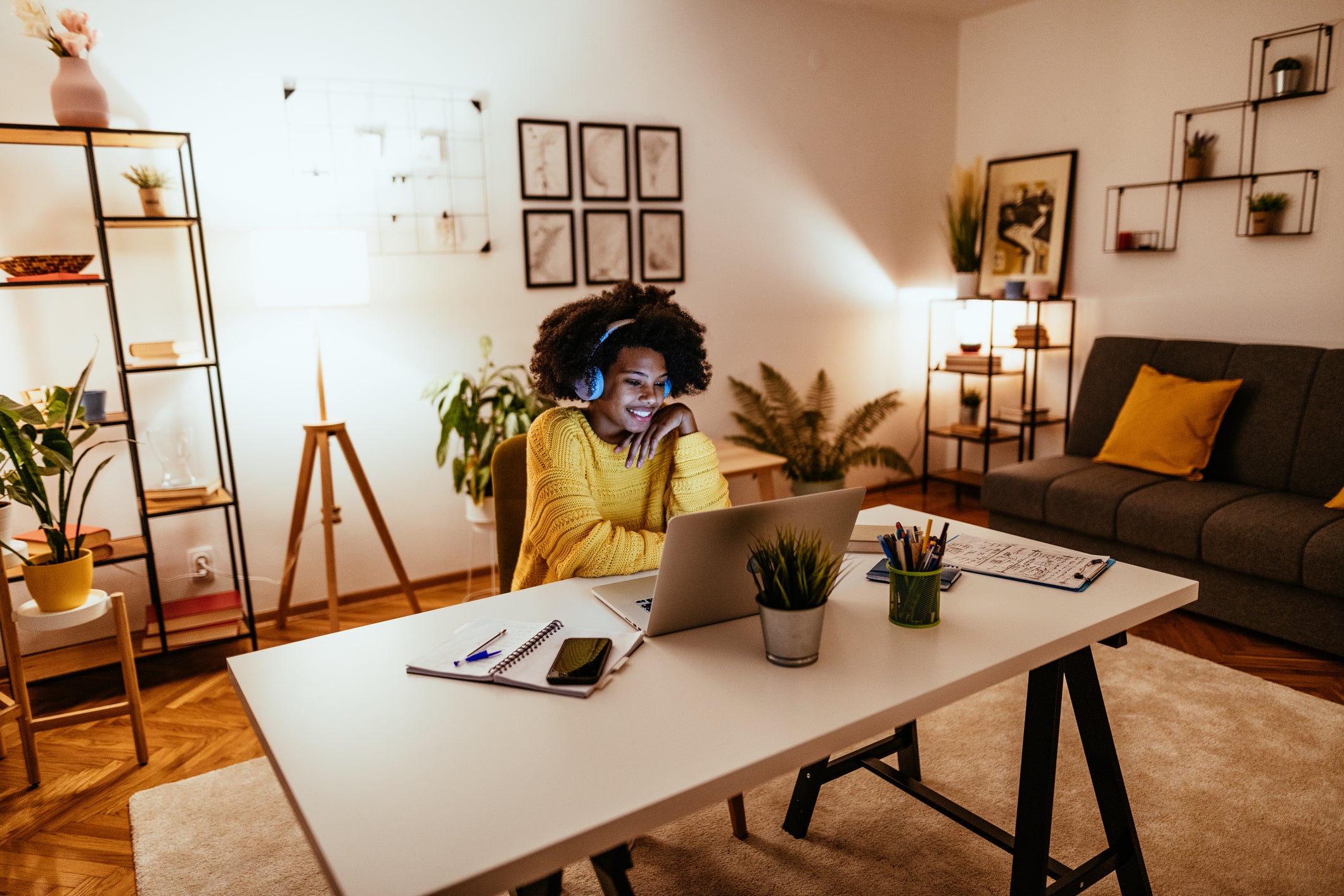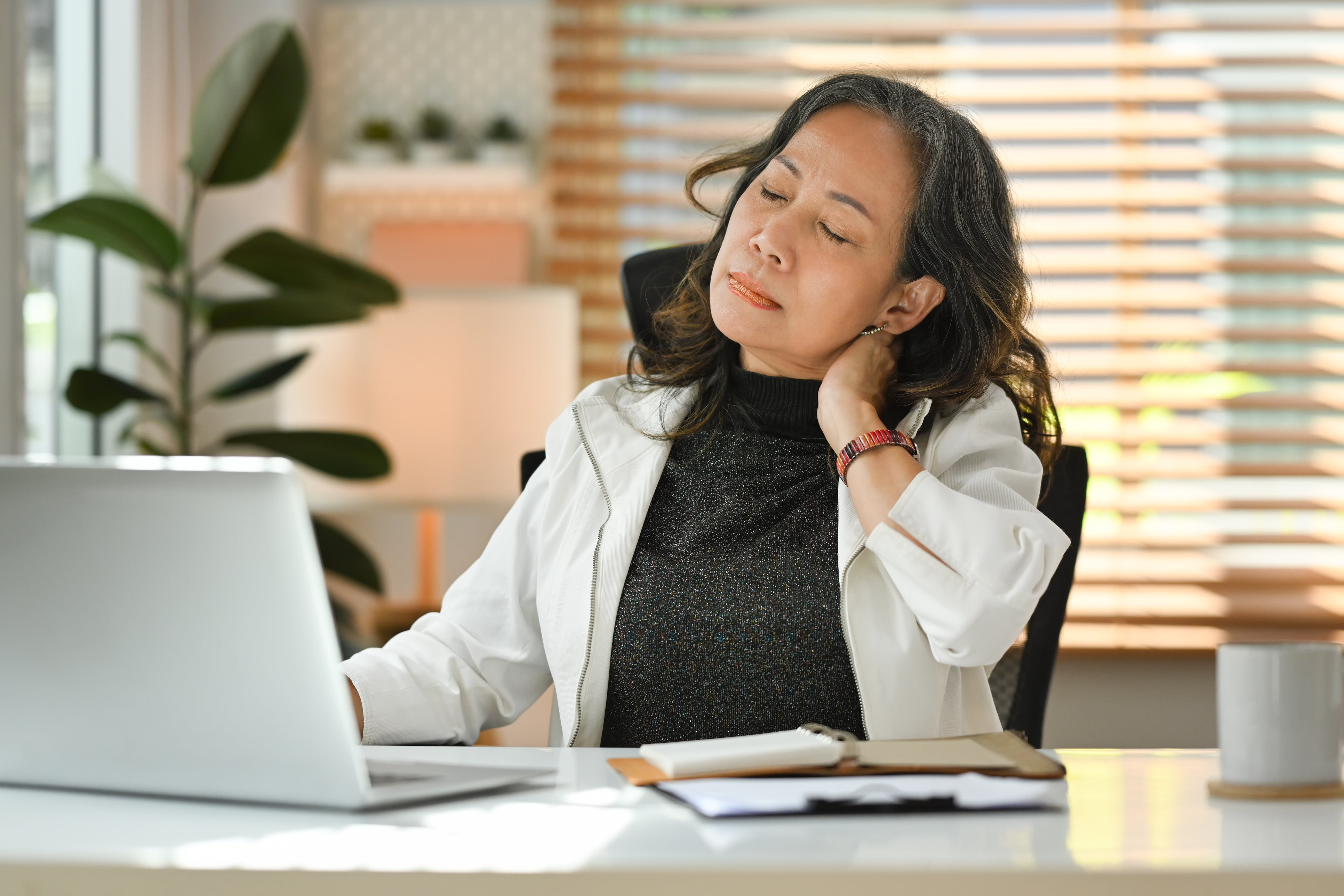What working from home is really doing to your health
From calorie intake to our mental and physical health, new ways of remote and hybrid working are having some profound effects on our wellness. Anna Magee looks at the latest studies and speaks with health specialists to find out how we can make it work best for our bodies and minds

Few knew pre-pandemic what the consequences of remote working would be for our minds and bodies. With less than 5 per cent of us working from home in 2019, it didn’t matter.
Now, with almost half the workforce either at home exclusively or in hybrid patterns, there’s more at stake and many are wondering about the health consequences of remote and hybrid working. There’s now a new body of research that can tell us.
“For some people, working at home was a good thing,” says Neil Greenberg, professor of defence mental health and occupational and forensic psychiatry at King’s College London.
“They were able to introduce elements of flexibility and go for a walk at lunchtime or pick their kids up – we know too that productivity overall increased,” says Greenberg, who co-authored an umbrella review published in the December 2023 edition of The Journal for Occupational Health.
“But that came at the expense of not knowing where the boundaries stopped, working longer without breaks, at weekends and odd times or even when slightly ill. Though the findings were mixed, some studies showed musculoskeletal pain, less activity, more sedentary behaviour and increased social isolation.”
Generational differences
For boomers and Gen-Xers, the transition to remote working may have been rockier. “People who had spent 30 years of their lives getting on a train or driving to work may have found it more difficult to adapt than the people who were used to living by remote means, like the younger generation,” says Greenberg.
In fact, some seven in 10 Gen-Zers now report being happy and content in their jobs, despite feeling stressed. More than a quarter (29 per cent) of Gen Z felt more connected to their peers and managers through chat messages than through in-person or video catch-ups. “Younger generations were more socially connected before the pandemic through remote means, so they found it easier to stay connected when working from home than the over-40s, who need more face-to-face contact,” Greenberg explained.
Productivity and flexibility aside, there have been costs to our mental and physical health. UK workers took more sick days – an average of 7.8, up from 5.8 pre-pandemic – in 2023 than at any point in the last decade. So, how has working from home and hybrid patterns affected us?

Diet changes
It’s no surprise that home workers report eating more. “People are often working in the kitchen or dining area where the fridge is often close by,” says Nichola Ludlam-Raine, a consultant dietitian specialising in obesity surgery. “I’m seeing a tendency with my patients to snack and graze all day and then work through lunch.”
A September 2023 survey on 2,000 hybrid-working Brits from tracking software MyFitnessPal found 60 per cent of them claimed to be more unhealthy on WFH days, had five between-meal snacks (only three when in the office) and ate 800 calories more. “Almost all of my patients for obesity surgery say they gained weight when they started working from home and have never been able to lose it,” she says.
“Being in the office gives you structure, and some research shows you eat less. If you’ve got eyes on you, you’re not going to be going to the kitchen every couple of minutes.” Ludlam-Raine suggests having structured eating patterns and leaving at least three hours between meals or snacks, as well as trying to work out of sight of food or the fridge.

Use it or lose it
The incidental office activity is cancelled when you work at home. That can give you more time for formal workouts but it’s increasing sedentary behaviour (sitting for long periods).
A systematic review published in the International Journal of Research and Public Health in September 2022found that remote working increased sedentary behaviour by 16 per cent and almost halved overall physical activity. “I often ask my patients, ‘How many steps did you take today?’” says Ludlam-Raine. The MyFitnessPal research found that people took on average 3,500 fewer steps than when they were in the office. “If people are working from home they’re often as low as 2,000 and sometimes in the 100s. That’s dangerously sedentary behaviour.”
It’s not hard to see where this is going – weight gain was reported in around half (46.9 per cent) of those working from home in the new King’s College Research. Plus, one in six of the under-45s jumped into the overweight or obesity categories after moving to working from home, according to large-scale research from the University of Leicester. Reduce your risk by making sure you get outside for the equivalent of an hour, ideally for a walk, cycle or jog in daylight, as this will help set your circadian rhythms for better sleep, which is crucial to weight, says Ludlam-Raine. Then take a 10-minute movement break at least every 90 minutes.

Feeling sore
As a nation, we’re sorer. Three in 10 of us suffer from back pain at work and last year, 8 million sick days were taken because of back pain, a new report from digital physiotherapy company Phio has found. The study didn’t distinguish between office and home workers, but four in five of those who started working from home during lockdown reported neck, shoulder or back pain. More recent research found the risk was two to three times higher in those who used laptops.
“Despite ergonomics advice, many people still don’t have a suitable workspace at home and may sit and work on a sofa or at the kitchen table for a long period, which can result in joint stiffness and backache,” says Karen Beattie, former physiotherapist for Team GB and musculoskeletal lead at Vita Health. “But many people who sit with perfect posture will also experience back pain because they’re simply sitting too long.”

Not seeing eye to eye
People working at home spend longer in front of screens, work longer without taking breaks and work more at weekends and evenings, according to Greenberg’s review. No surprise then, that one in three home workers has eye strain at the end of each day, according to research from Vision Direct.
“The use of digital devices for more than two hours uninterrupted can bring about digital eye strain,” says Dr Clare O’Donnell, head of optometry at specialist eye hospital group Optegra. “Symptoms on the surface of our eyes such as redness are caused by reduced blinking – we focus so hard on the screens that we forget to blink as regularly as we should. That can then lead to dry eyes, blurry vision, red eye, eye tiredness and double vision as well as headaches, muscle pain in the neck and back, and difficulties concentrating.”
Reduced contrast of characters compared to the screen background, glare and reflections as well as screens at the wrong distance or angle, poor lighting and infrequent blinking all play a part. So, what can you do? Anti-glare screens can help in reducing the amount of light reflected from your screen and clearly legible font usually in a dark colour over a light background is best.
“Sit upright at a desk or table with your screen approximately 20in from your eyes [at an angle just lower than the eyes],” O’Donnell says. “Adjust the brightness so the light coming from monitors matches the light in your surrounding workspace. And remember the 20-20-20 rule: take a break of at least 20 seconds, every 20 minutes and look at least 20ft away. This is to help the eyes refocus, blink and rest from the screen.”

Feeling lonely
How isolated and lonely you feel when you’re working from home depends on your personality (how much socialising you need to feel happy), your working style (whether you need collaboration to do your job or not), and your age, according to Greenberg’s review. It showed a higher risk of depression – loneliness being a contributing factor – in those working from home, and a greater tendency to work while ill, which could also increase depressive symptoms.
Even with the most switched-on tech, people working from home communicate less with others, says Sut I Wong, professor of communication and management at Bi Norwegian Business School. “You might have random conversations about a project, but there are also a lot of interactions that are actually not work-related but help us to understand our colleagues and organisation as well as our environments.” This could be anything from a random idea bounced off in the kitchen to a natter with a barista on the way to work about a movie you’ve seen. “That’s human interaction essential to mental wellbeing, especially if you live alone,” she says.
This is what Wong calls “professional isolation”, and can be made worse by the proliferation of new service software designed to make remote working easier. “Some people are text-based communicators, but others are more verbal and may engage less with digital communication tools than their team members. They end up feeling excluded and more stressed, especially if they feel they’re not using them properly.” Who isn’t familiar with giving up on Miro boards and wishing for old-school markers and paper? “They may also not then give their most creative contribution.”
In fact, a ground-breaking study published in the journal Nature last December suggested that remote working could negatively impact innovation. It analysed 20 million research articles and four million patent applications from the last 50 years and found that those in remote teams were “consistently less likely to make breakthrough discoveries relative to their on-site counterparts”.
“Collaboration in person is important for creativity,” says Wong. “If you’re doing hybrid working, make sure you stick to the same in-office and at-home days and if you’re an organisation, try and get your people all into the office on the same days. It’s best for innovative thinking.”
Five ways to make it work for you
Cary Cooper, professor of organisational psychology and health at Manchester Business School, has advice on making sure you get the most from the new workplace:
1. Look at your personality and your work. If you’re an extrovert who talks to people for a living, remote work or even hybrid patterns might not be right.
2. Take more control of your work set-up. Studies show the more control and autonomy you have over your circumstances, the happier you will be. This applies as much to making sure your ergonomics are right to how you want to work best.
3. Once you know what you need to thrive (at-home: office ratio, number of breaks, start/finish times) talk to your employer to outline your best ways of working.
4. Use the flexibility of remote work to make sure you exercise, take breaks every hour, eat healthier and communicate regularly with other people.
5. Keep your visibility high. We haven’t proven this in the research yet, but there may be a risk that those who choose to favour flexible and at-home working may not get as many promotions as people who prefer being in the office, just because they’re not as visible. Whether electronically or in person, make sure you’re being seen, and your ideas being heard.





Join our commenting forum
Join thought-provoking conversations, follow other Independent readers and see their replies
Comments